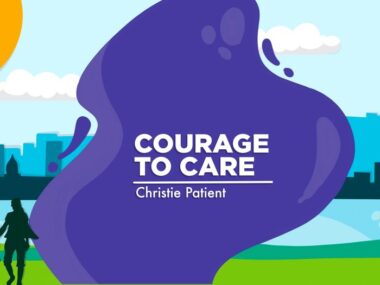Healthcare literacy is the unsung hero of improved patient outcomes
How understanding our health can result in a better quality of life
Written by |

As patients, it’s crucial to know our bodies and the care they need. Understanding the complex ways that a chronic condition like pulmonary fibrosis may affect us over time, as well as the options available to treat and manage symptoms, is important for long-term quality of life.
However, as a 2018 article published in The Nurse Practitioner journal noted, “Approximately 80 million adults in the United States are estimated to have limited or low health literacy.” This lack of medical understanding not only affects these patients’ experiences and quality of life, but also leads to poor health outcomes.
Personal health literacy, as defined by the United States government’s initiative Healthy People 2030, is “the degree to which individuals have the ability to find, understand, and use information and services to inform health-related decisions and actions for themselves and others.”
According to the Nurse Practitioner article, a lack of medical literacy is associated with more frequent use of emergency department care for primary medical needs, increased hospitalization rates, a greater chance of developing other diseases, and higher mortality rates when compared with those who have a higher degree of health literacy.
These problems are exacerbated among ethnic minorities, economically disadvantaged people, older patients, and those for whom English is not a native language.
The result of poor health literacy is, most importantly, poor outcomes for patients. But its effects ripple across the healthcare system. Repeated hospital visits and multiple, often avoidable, diagnoses increase the financial and social burdens on the healthcare system. It adds strain to preexisting systemic issues that prevent patients from accessing reliable, affordable care in the U.S.
Addressing health literacy issues
So how do we tackle such a massive problem? Luckily, the Health Communication and Health Information Technology Workgroup created several objectives, including the following six, to give us some starting goals:
- “Increase the proportion of adults whose health care provider checked their understanding”
- “Decrease the proportion of adults who report poor communication with their health care provider”
- “Increase the proportion of adults whose health care providers involved them in decisions as much as they wanted”
- “Increase the proportion of people who say their online medical record is easy to understand”
- “Increase the proportion of adults with limited English proficiency who say their providers explain things clearly”
- “Increase the health literacy of the population”
If you’re looking to improve your health literacy, be wary of using the internet for medical research. There’s a lot of misinformation out there, and wading into it can easily amplify confusion and fear instead of increasing knowledge and understanding.
That’s why asking your doctors lots of questions is a good place to start. Because appointments are often short, it can be helpful to keep a journal of symptoms and a list of questions you think of between visits to make the most of your limited time with the experts.
Remember, it’s always OK to say, “I don’t know what that means” or “Can you please explain it to me as if I were a child?” If you still feel like your doctor doesn’t communicate with you in a way that’s easy to understand, it’s also OK to seek a second opinion.
Patient-doctor communication is key
Doctors should check with patients at each visit to be sure the information they’re delivering makes sense. They should also ask if the patient has any questions. Additionally, translators should be available to anyone who might benefit from hearing information in their native tongue.
Doctors should always remember that patients often don’t know what they don’t know. That’s where the health literacy gap starts. A patient with minimal medical understanding might be overwhelmed or discouraged by an onslaught of new information they can’t grasp. When working together to build a foundation of understanding, start with the basics. Use simple language and meet the patient where they’re at.
The most important factor in patient communication, however, is trust. Consistency, good bedside manner, and two-way communication are all good ways for providers to help build trust in the relationship. With trust comes understanding, compliance, and better outcomes for everyone.
Many doctors offer resources that patients can take home to read independently. Sending short notes with the main points from the visit or topics to explore further at home is helpful. Online medical charts and digital communication can be extremely valuable, but doctors should ensure that patients know how to access and use those resources before they leave the office.
Learning from our community
Community support for your health education is out there. There are support groups and online forums for many disease communities, including pulmonary fibrosis.
Once we patients have a good foundation of knowledge, we may feel empowered to advocate for ourselves or ask our doctors to involve us more in our own healthcare decisions.
Note: Pulmonary Fibrosis News is strictly a news and information website about the disease. It does not provide medical advice, diagnosis, or treatment. This content is not intended to be a substitute for professional medical advice, diagnosis, or treatment. Always seek the advice of your physician or other qualified health provider with any questions you may have regarding a medical condition. Never disregard professional medical advice or delay in seeking it because of something you have read on this website. The opinions expressed in this column are not those of Pulmonary Fibrosis News or its parent company, Bionews, and are intended to spark discussion about issues pertaining to pulmonary fibrosis.







Leave a comment
Fill in the required fields to post. Your email address will not be published.